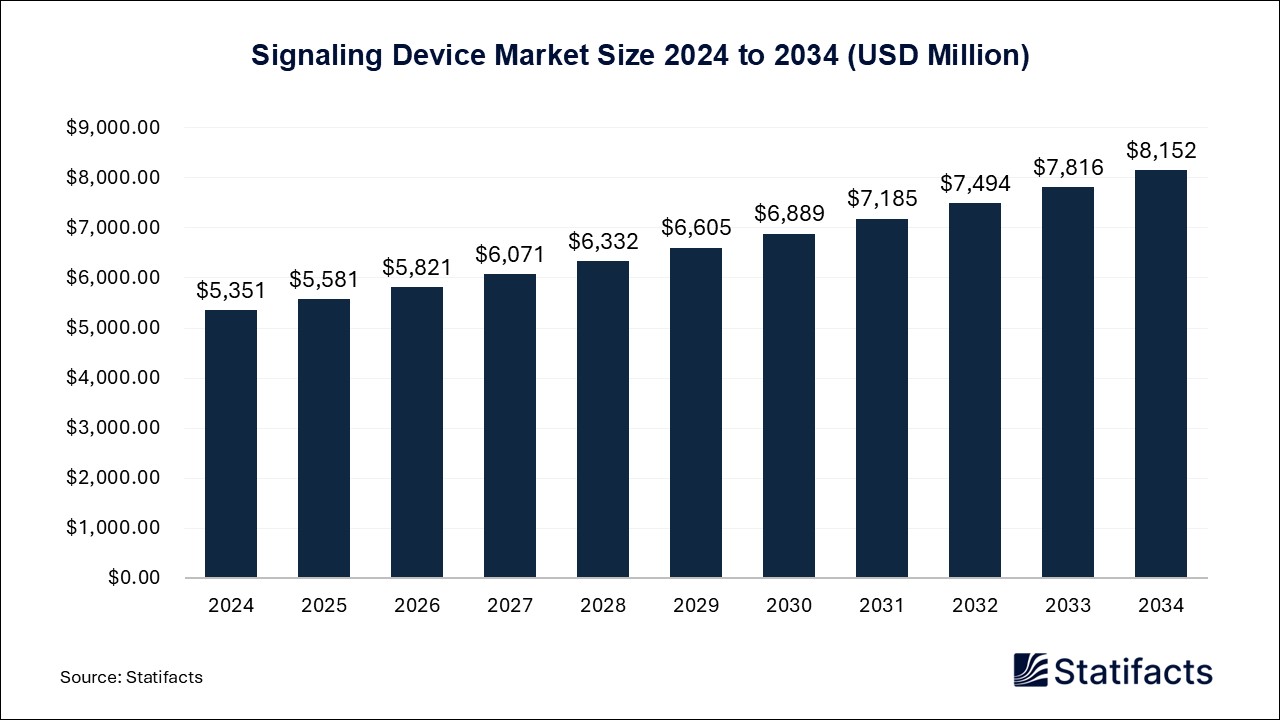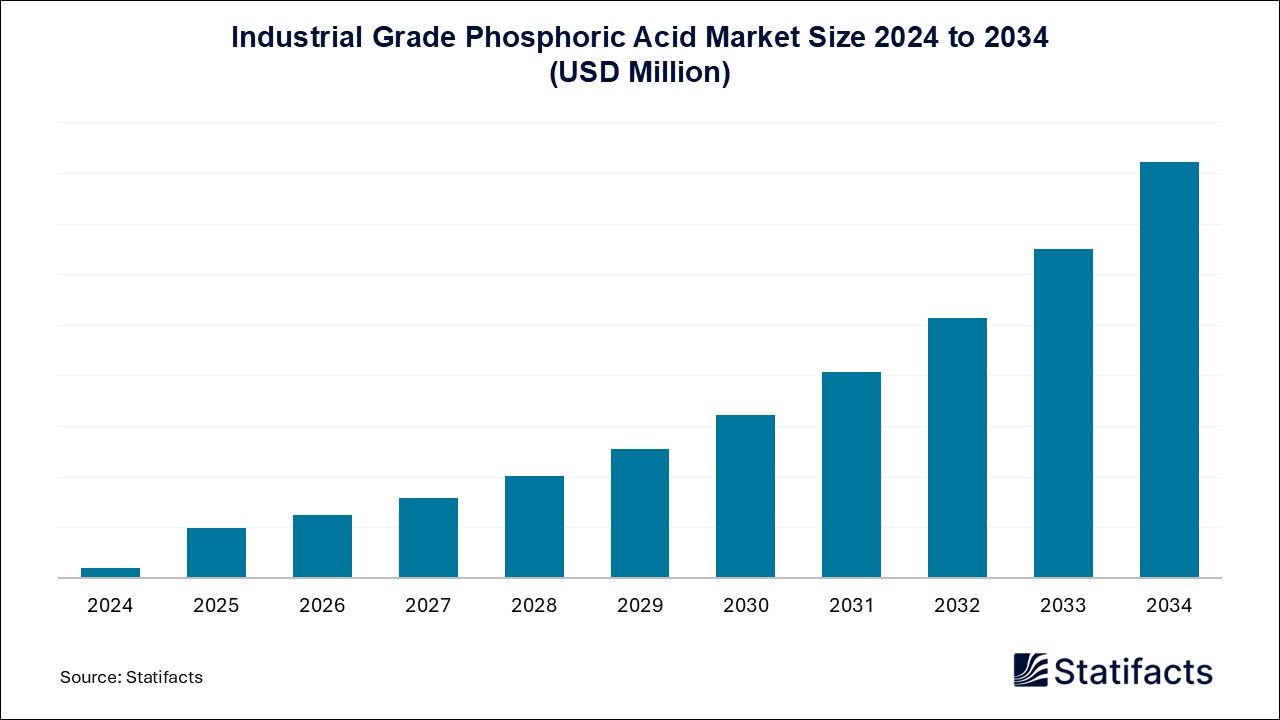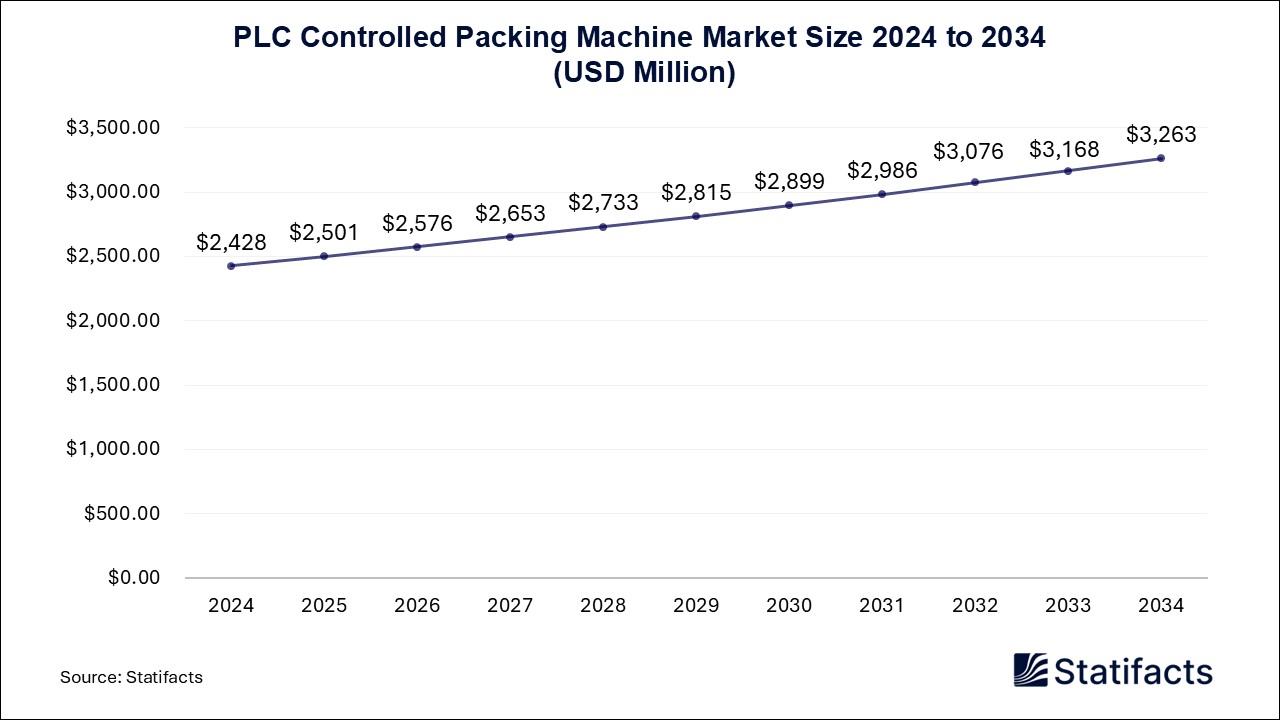Last Updated: 18 Jul 2025
Source: Statifacts
By clicking “Accept All Cookies” you agree to the storing of cookies on your device to enhance site navigation, analyze site usage, and assist in our marketing efforts.
Privacy PolicyThe global solid tumors market size was estimated at USD 330 million in 2024 and is projected to be worth around USD 14,484 million by 2034, growing at a CAGR of 45.96% from 2025 to 2034. The solid tumors market is experiencing significant growth, driven by rising global cancer incidence, advances in targeted therapies, increasing awareness and screening, and robust research and development investments by pharmaceutical companies. North America currently dominates due to a strong healthcare infrastructure and high adoption of novel therapies. Asia Pacific is projected to grow fastest, driven by a growing patient pool and improving access to care.
| Industry Worth | Details |
| Market Size in 2025 | USD 490 Million |
| Market Size by 2034 | USD 14,484 Million |
| Market Growth Rate from 2025 to 2034 | CAGR of 45.96% |
Solid tumors are localized masses developing in organs such as the breast, lungs, prostate, colon, pancreas, ovaries, and brain and are treated through an integrated approach involving diagnostic imaging, surgical oncology, radiation therapy, chemotherapy, targeted agents, and immunotherapies. This product and service ecosystem spans oncology hospitals, diagnostic labs, pharmaceutical research and development, biotech firms, and precision medicine platforms improved by AI-driven imaging and biomarker diagnostics.
Boehringer Ingelheim’s experimental drug zongertinib demonstrated a 71% tumor response rate in advanced HER2-mutated non-small cell lung cancer patients.
AI has transformed the solid tumors market by improving diagnostic accuracy, accelerating image analysis, and improving treatment planning. In radiology, critical for detecting and staging solid tumors, over 340 FDA-approved AI tools are now used to assist physicians in identifying abnormalities such as brain tumors, breast nodules, and lung lesions. These systems swiftly flag critical cases, helping prioritize urgent scans and reducing diagnostic delays, while more average-performing radiologists can deliver expert-level results with AI support. AI’s integration improves workflow efficiency, accuracy, and patient outcomes, without replacing medical professionals; rather, it serves as a collaborative, trust-based tool in clinical decision making.
Rising cancer rates and AI advancements are driving the adoption of intelligent oncology solutions that enhance diagnosis, treatment planning, and personalized care for solid tumors. The increasing incidence of cancer worldwide is compelling the healthcare industry to embrace medical technologies made to combat solid tumors. By enabling earlier detection, more precise diagnosis, optimized treatment planning, and continuous patient monitoring, AI helps clinicians better manage complex cancer cases and improve survival outcomes.
Breakthroughs in machine learning, deep learning, and natural language processing have significantly improved AI’s ability to analyze complex medical datasets. These technological improvements support more sophisticated oncology applications, including predictive modeling and personalized treatment approaches.
The solid tumors market is challenged by high treatment costs, slow research, and evolving ethical and regulatory hurdles, which complicate its reliable, equitable, and compliant deployment in cancer care. AI’s effectiveness in oncology hinges on large, diverse, and high-quality datasets. However, medical data are often non-standardized, incomplete, or contain errors, which can impair AI training and lead to biased or unreliable AI performance across different patient populations. This limitation not only affects diagnostic accuracy but also raises equity concerns when underrepresented groups are misdiagnosed.
Deploying AI in cancer care involves navigating complex ethical and legal landscapes. There are significant concerns around patient privacy, informed consent, and accountability for AI-driven clinical decisions. Regulatory frameworks are still evolving and often lag behind technological advancements, making it challenging for developers and clinicians to ensure compliance and maintain trust.
Solid tumors market opportunities include AI-powered imaging and precision-guided immunotherapy are transforming upper GI cancer care by enabling earlier detection, improved diagnostics, and more personalized, effective treatment strategies. AI-powered endoscopic imaging is revolutionizing early detection in upper gastrointestinal cancers. Innovations such as high-definition endoscopies combined with special imaging lights and AI-assisted image analysis are enabling physicians to detect precancerous and cancerous lesions with greater precision than conventional methods. This integration improves diagnostic accuracy and timeliness, improving patient outcomes while reducing the need for invasive procedures.
Another significant opportunity involves the seamless blending of immunotherapy with AI AI-guided diagnostic platform. For instance, recent studies demonstrate that combining neoadjuvant immunotherapy, such as durvalumab, with chemotherapy before surgery substantially reduces recurrence risk in esophageal and gastric cancers. As AI refines patient selection and response prediction, its role grows more vital in orchestrating personalized, multidisciplinary treatment regimens.
“AI will one day be as integrated into cancer care as it is in smartphones and self-driving cars.”
“Can offer deep expertise across a growing number of precisely defined cancer indications, and… generate insights that research focused on individual hypotheses might miss.”
By indication, the breast cancer segment maintained a leading position in the solid tumors market in 2024. Its dominance is driven by a high global prevalence and improved awareness, resulting in early detection. According to the World Health Organization, breast cancer became the most common cancer globally in 2021, surpassing lung cancer. The widespread adoption of mammography screening programs and increased access to treatment in developed and developing nations have expanded its diagnostic and therapeutic footprint. Moreover, advancements in hormone therapy, targeted treatments such as HER2 inhibitors, and genomic profiling have further strengthened its market presence. Continued investment in research and development and strong pipelines from companies like Roche and AstraZeneca support its ongoing dominance.
By indication, the prostate cancer segment is anticipated to grow with the highest CAGR in the market during the studied years from 2025 to 2034. This growth is attributed to a rising geriatric male population and improved diagnostic capabilities such as PSA testing and advanced imaging. According to the American Cancer Society, about 1 in 8 men will be diagnosed with prostate cancer during their lifetime. The development of next-generation androgen deprivation therapies and radio ligand therapies is also contributing to market expansion. Moreover, the inclusion of AI-based decision support tools and personalized treatment protocols is improving outcomes and fueling confidence among clinicians. These factors collectivity position the prostate cancer segment as the most rapidly expanding within the solid tumors market.
By indication, the lung cancer segment underwent notable growth in the market during 2024. Although once the leading cancer in terms of prevalence, it remains a significant contributor to global cancer mortality due to late-stage diagnoses. However, recent strides in low-dose CT screening and the availability of immunotherapies like checkpoint inhibitors have led to improved survival rates. Biomarker-driven treatment strategies, particularly in non-small cell lung cancer, have gained traction and are reshaping the standard of care. Additionally, smoking cessation initiatives and urban air quality management are influencing incidence trends. These factors make lung cancer a highly active and innovative area in terms of research, development, and treatment, making it a notable segment in the solid tumors market.
North America
North America dominated the global solid tumors market in 2024, driven by a high prevalence of cancer, advanced healthcare infrastructure, and increased adoption of innovative treatments such as immunotherapy and precision oncology. The United States, in particular, accounts for a significant share due to substantial Research and development investments, strong reimbursement frameworks, and the presence of major pharmaceutical companies like Pfizer, Bristol Myers Squibb, and Merck & Co.. Additionally, widespread cancer screening programs and early diagnosis initiatives contribute to the region’s leadership. The American Cancer Society reported over 2 million new cancer cases diagnosed in the U.S. in 2023, underscoring the high demand for treatment solutions.
Asia Pacific
The Asia Pacific market is expected to grow at the fastest rate between 2025 and 2034 due to rising cancer incidence, improving healthcare access, and increased government focus on oncology care. Countries such as China, India, and Japan are witnessing a surge in diagnostic infrastructure, cancer awareness, and healthcare spending. Furthermore, regional regulatory agencies are accelerating drug approvals and clinical trials, attracting global biopharma investments. According to the Global Cancer Observatory, Asia accounted for nearly half of all global cancer deaths in 2020, highlighting a growing unmet need. This dynamic environment is propelling Asia Pacific to merge as a high-growth region in the global solid tumors market.
The competitive landscape in the solid tumors market reflects a concentrated industry dominated by a few major pharmaceutical and biotech players, creating an oligopoly. While many smaller firms innovate niche therapies, major companies like Roche, Merck & Co.., and Merck KGaA hold leading positions due to their expansive pipelines, global reach, and strong strategic partnerships.
Roche operates in over 100 countries, primarily in oncology and diagnostics. Its product line includes established cancer therapies such as Tecentriq and a diagnostic portfolio spanning tissue and in vitro diagnostics.
Merck & CO. operates globally, with oncology as a core sector. Its leading products include Keytruda, Lynparza, and Lenvima. Its current Research and development is focused on ADCs such as partritumab derutecan, hormone-driven prostate cancer agents like opevesostat acquired from Orion.
Merck KGaA runs its healthcare operations globally under EMD Serono. The company focuses research and development on synergistic combination therapies targeting a range of solid tumors, including prostate, Ovarian, colorectal, and neuroblastoma.
Published by Kesiya Chacko
Last Updated: 18 Jul 2025
Source: Statifacts
Last Updated: 18 Jul 2025
Source: Statifacts
| Subsegment | 2024 | 2025 | 2026 | 2027 | 2028 | 2029 | 2030 | 2031 | 2032 | 2033 | 2034 |
|---|---|---|---|---|---|---|---|---|---|---|---|
| Neuroblastoma | 27.15 | 39.69 | 57.77 | 83.75 | 120.97 | 174.17 | 250.04 | 358.03 | 511.43 | 728.95 | 1,013.24 |
| Glioblastoma | 29.61 | 43.80 | 64.49 | 94.62 | 138.35 | 201.71 | 293.33 | 425.57 | 616.17 | 890.46 | 1,237.74 |
| Breast Cancer | 54.57 | 79.86 | 116.35 | 168.82 | 244.09 | 351.81 | 505.62 | 724.80 | 1,036.56 | 1,479.21 | 2,056.10 |
| Pancreatic Cancer | 28.26 | 42.78 | 64.47 | 96.76 | 144.70 | 215.71 | 320.67 | 475.47 | 703.40 | 1,038.43 | 1,443.42 |
| Ovarian Cancer | 25.29 | 37.83 | 56.34 | 83.59 | 123.60 | 182.25 | 268.01 | 393.24 | 575.78 | 841.49 | 1,169.67 |
| Lung Cancer | 54.00 | 79.60 | 116.82 | 170.80 | 248.88 | 361.58 | 523.93 | 757.39 | 1,092.54 | 1,572.99 | 2,186.46 |
| Prostate Cancer | 28.48 | 43.35 | 65.67 | 99.06 | 148.86 | 222.94 | 332.90 | 495.74 | 736.44 | 1,091.57 | 1,517.29 |
| Colorectal Cancer | 30.26 | 46.02 | 69.64 | 104.95 | 157.57 | 235.79 | 351.80 | 523.48 | 777.07 | 1,150.97 | 1,599.85 |
| Others | 52.07 | 77.32 | 114.34 | 168.44 | 247.32 | 362.11 | 528.82 | 770.52 | 1,120.41 | 1,626.22 | 2,260.44 |
Last Updated: 18 Jul 2025
Source: Statifacts
| Subsegment | 2024 | 2025 | 2026 | 2027 | 2028 | 2029 | 2030 | 2031 | 2032 | 2033 | 2034 |
|---|---|---|---|---|---|---|---|---|---|---|---|
| Neuroblastoma | 27.15 | 39.69 | 57.77 | 83.75 | 120.97 | 174.17 | 250.04 | 358.03 | 511.43 | 728.95 | 1,013.24 |
| Glioblastoma | 29.61 | 43.80 | 64.49 | 94.62 | 138.35 | 201.71 | 293.33 | 425.57 | 616.17 | 890.46 | 1,237.74 |
| Breast Cancer | 54.57 | 79.86 | 116.35 | 168.82 | 244.09 | 351.81 | 505.62 | 724.80 | 1,036.56 | 1,479.21 | 2,056.10 |
| Pancreatic Cancer | 28.26 | 42.78 | 64.47 | 96.76 | 144.70 | 215.71 | 320.67 | 475.47 | 703.40 | 1,038.43 | 1,443.42 |
| Ovarian Cancer | 25.29 | 37.83 | 56.34 | 83.59 | 123.60 | 182.25 | 268.01 | 393.24 | 575.78 | 841.49 | 1,169.67 |
| Lung Cancer | 54 | 79.60 | 116.82 | 170.80 | 248.88 | 361.58 | 523.93 | 757.39 | 1,092.54 | 1,572.99 | 2,186.46 |
| Prostate Cancer | 28.48 | 43.35 | 65.67 | 99.06 | 148.86 | 222.94 | 332.90 | 495.74 | 736.44 | 1,091.57 | 1,517.29 |
| Colorectal Cancer | 30.26 | 46.02 | 69.64 | 104.95 | 157.57 | 235.79 | 351.80 | 523.48 | 777.07 | 1,150.97 | 1,599.85 |
| Others | 52.07 | 77.32 | 114.34 | 168.44 | 247.32 | 362.11 | 528.82 | 770.52 | 1,120.41 | 1,626.22 | 2,260.44 |
Growth is supported by rising incidence of solid tumors, strong R&D investment in oncology, and innovations in targeted therapies, immunotherapy, and personalized treatments that improve efficacy and safety.
While chemotherapy remains foundational, immunotherapy is emerging as the most innovative and rapidly expanding segment, with targeted therapies also increasing to improve patient outcomes with fewer side effects.
Breast and lung cancer therapies currently dominate, reflecting high prevalence and clear unmet needs, while emerging focus includes colorectal and prostate cancers, driven by expanding treatment availability.
Major challenges include the rising cost of advanced therapies, long regulatory approval cycles, the development of drug resistance, and inequitable patient access to high-end treatments.
The market is evolving toward personalized medicine, combination regimens (e.g., immunotherapy with targeted therapy), digital health integration, and early detection tools like liquid biopsies, all supporting enhanced therapy selection and adherence.
To get full access to our Market Insights, you need a Professional Account or a Business Suite.

You will receive an email from our Business Development Manager. Please be sure to check your SPAM/JUNK folder too.

You will receive an email from our Business Development Manager. Please be sure to check your SPAM/JUNK folder too.

Our customers work more efficiently and benefit from



